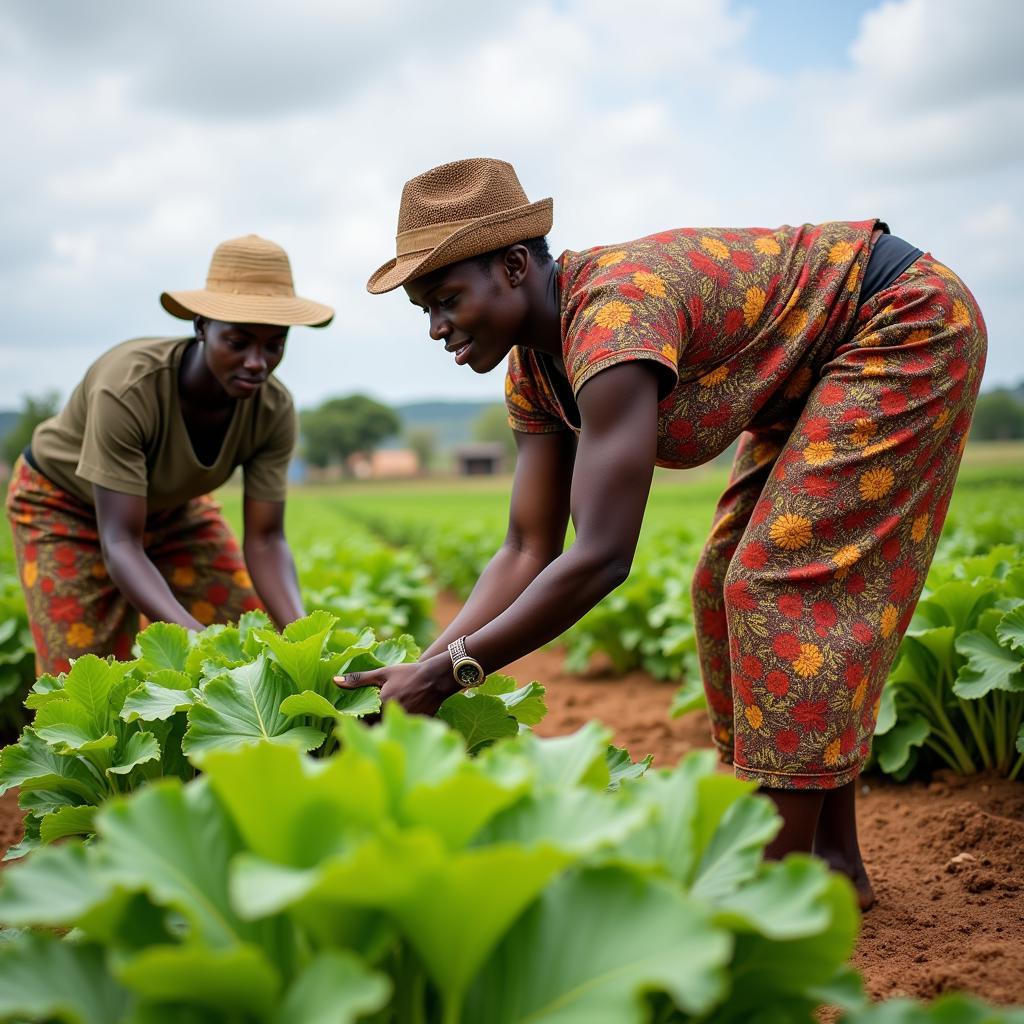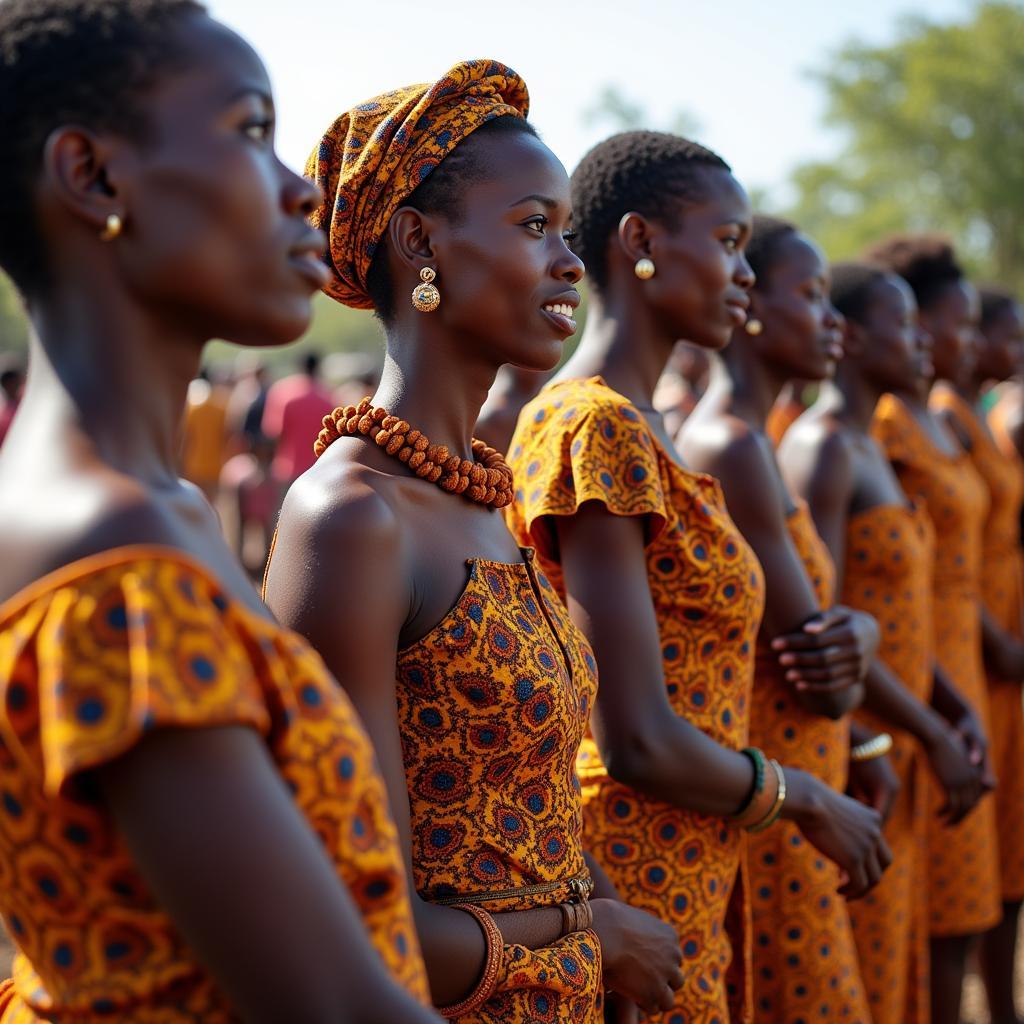Exploring African Clothes Styles in 2015
African clothes styles in 2015 showcased a vibrant mix of traditional influences and modern interpretations. From the bold prints of Ankara to the flowing elegance of Kente, the diverse fashion landscape reflected the continent’s rich cultural heritage and burgeoning creativity. This exploration delves into the captivating trends that defined African fashion in 2015.
A Fusion of Tradition and Modernity in African Clothes Styles (2015)
2015 witnessed a fascinating interplay between tradition and modernity in African fashion. Designers skillfully blended indigenous textiles and patterns with contemporary silhouettes, creating unique and stylish garments. This fusion resonated with a global audience, highlighting the beauty and versatility of African fabrics. The rise of African fashion bloggers and influencers further propelled these styles onto the international stage.
The Reign of Ankara and Kente in 2015
Ankara, with its vibrant colors and eye-catching motifs, continued its reign as a staple in African wardrobes. From casual wear to formal attire, Ankara fabrics were transformed into a wide array of garments, including dresses, skirts, trousers, and even accessories. Kente, the handwoven cloth of Ghana, also maintained its prestigious status, symbolizing royalty and tradition. Its intricate patterns and rich colors were incorporated into both traditional and modern designs, demonstrating the enduring appeal of this iconic fabric. Many designers experimented with unconventional uses of Kente, blending it with other fabrics and incorporating it into unexpected pieces like jackets and handbags.
What were some popular Ankara styles in 2015? Peplum tops, high-waisted skirts, and fitted dresses were all the rage, often embellished with intricate embroidery or beading.
The Rise of African Designers in 2015
2015 marked a pivotal moment for African designers who gained increasing recognition both within the continent and internationally. Their innovative designs challenged conventional notions of African fashion, showcasing the continent’s diverse cultural influences and artistic talent. From established names to emerging talents, African designers were at the forefront of creating contemporary and stylish clothing that resonated with a global audience. They played a crucial role in promoting African fashion as a vibrant and influential force in the global fashion industry.
What factors contributed to the rise of African designers? Increased media attention, participation in international fashion weeks, and the growing popularity of African-inspired fashion trends all played a significant role.
Beyond Ankara and Kente: Exploring Other African Fabrics
While Ankara and Kente remained popular choices, 2015 also saw a resurgence of interest in other traditional African fabrics. Aso-Oke, a hand-woven cloth from Nigeria, was used to create elegant and sophisticated garments. Mudcloth, from Mali, with its unique patterns and textures, gained popularity for its earthy and natural appeal. These fabrics, each with its own distinct history and cultural significance, added depth and variety to the African fashion landscape.
Why did these other fabrics gain popularity? The growing appreciation for handcrafted textiles and the desire for unique and authentic garments fueled the renewed interest in these traditional fabrics.
“In 2015, we saw a real shift towards embracing the diversity of African textiles,” says Adaobi Okoye, a renowned Nigerian fashion designer. “People were eager to explore fabrics beyond the well-known Ankara and Kente, discovering the beauty and craftsmanship of Aso-Oke, Mudcloth, and other traditional materials.”
Conclusion: A Year of Vibrancy and Innovation in African Clothes Styles
African clothes styles in 2015 were characterized by a vibrant blend of traditional and modern influences. From the bold prints of Ankara to the intricate patterns of Kente, the fashion landscape reflected the continent’s rich cultural heritage and creative spirit. The rise of African designers and the renewed interest in traditional fabrics further solidified Africa’s position as a major player in the global fashion industry. The trends of 2015 laid the groundwork for continued growth and innovation in African fashion in the years to come.
“2015 was a pivotal year for African fashion,” adds Kwame Asante, a Ghanaian fashion historian. “It marked a moment of increased global recognition and a celebration of the continent’s diverse textile traditions.”
If you’re looking for further inspiration, explore our articles on traditional African headwraps and contemporary African jewelry design. For assistance with styling your African attire, contact us at +255768904061, kaka.mag@gmail.com, or visit us at Mbarali DC Mawindi, Kangaga, Tanzania. We have a 24/7 customer service team.



